
Steven Murray | Locked Priest In Trunk then Murdered Him | Police Interrogation
Steven Murray | Locked Priest In Trunk then Murdered Him | Police Interrogation The motive for the killing isn't entirely clear. Murray told the St. Augustine Record for a story published in July 2016 that he had Robert in the trunk of the car in South Carolina and realized he could get in big trouble if Robert ever reported him. "I just (expletive) freaked out and I killed him," Murray told the newspaper in an interview from jail. Speaking more generally, Murray has told AP that he suffers from mental health issues and wanted to cause pain because of hurt he had suffered in his life. Authorities have said Murray has twice attempted to kill himself in jail since his arrest. Murray expressed both sorrow and defiance in public statements as he was taken from the courthouse after hearings last year. In postcards and calls to AP from jail, he has repeatedly said he cries over Robert's death and that he is sorry. "My apologies go out to the family and friends of Father Rene," he said Tuesday. "I hope with time they can get some closure." Murray has said that his father abused him badly while he was growing up in South Carolina. His sister, Bobbie Jean Murray, told AP that the abuse led Murray to drugs and crime at an early age. He met Robert through a girlfriend, Ashley Shreve. The couple did drugs together, and Robert often gave them money, against their families' wishes. Robert's colleagues have said he was devoted to helping the poor, often scraping leftovers from plates into baggies to give to the homeless. He also had great compassion for addicts, sometimes going so far as to lend them his car while he walked home alone through dangerous neighborhoods. Because he devoted his life to helping society's most troubled, he was also aware that he could become a victim of violence. More than two decades before his death, he signed a "Declaration of Life," calling for his killer to be spared execution in the event of his murder. That did not sway prosecutors, who have said their decision to seek the death penalty was based on the aggravated nature of the slaying.
20 Des 20241h 15min
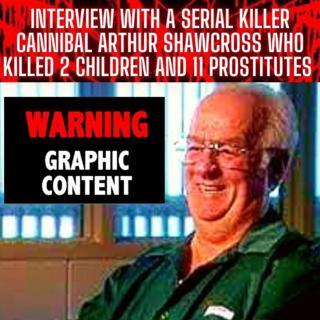
Interview With A Serial Killer Cannibal Arthur Shawcross Who Killed 2 Children and 11 Prostitutes (True Crime Documentary)
Interview With A Serial Killer Cannibal Arthur Shawcross Who Killed 2 Children and 11 Prostitutes (True Crime Documentary) There is no doubt that Arthur Shawcross is a psychopath. Found guilty of killing 2 children and 11 prostitutes his tales of cannibalism and mutilation have made him one of America's most notorious serial killers. That he killed 13 people by asphyxiation is certain.
20 Des 202444min
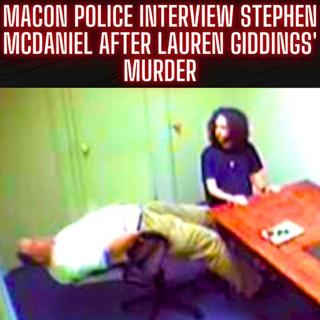
Stephen McDaniel's First Interview with Macon police after Lauren Giddings' Murder
Stephen McDaniel's First Interview with Macon police after Lauren Giddings' Murder Stephen McDaniel's first interview with the Macon Police Department. McDaniel later pleaded guilty in the killing of Lauren Giddings, a Mercer University law student. As part of the plea deal, McDaniel was sentenced to life in prison with the chance of parole in 2041. Macon police interview Stephen McDaniel after Lauren Giddings' disappearance This is a video of Macon police interviewing Stephen McDaniel for the first time following the disappearance of his fellow Mercer University law student, Lauren Giddings.
19 Des 20242h 1min
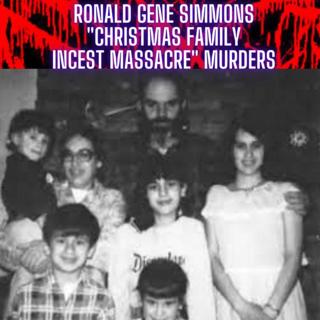
Ronald Gene Simmons "CHRISTMAS FAMILY INCEST MASSACRE" murders
Ronald Gene Simmons "CHRISTMAS FAMILY INCEST MASSACRE" murders On December 22, 1987, Ronald Gene Simmons began a killing spree that would be the worst mass murder in Arkansas history and the worst crime involving one family in the history of the country. His rampage ended on December 28, 1987, leaving dead fourteen members of his immediate family and two former coworkers. Ronald Gene Simmons was born on July 15, 1940, in Chicago, Illinois, to Loretta and William Simmons. On January 31, 1943, William Simmons died of a stroke. Within a year, Simmons’s mother married again, this time to William D. Griffen, a civil engineer for the U.S. Army Corps of Engineers. The corps moved Griffen to Little Rock (Pulaski County) in 1946, the first of several transfers that would take the family across central Arkansas over the next decade. On September 15, 1957, Simmons dropped out of school and joined the U.S. Navy. His first station was Bremerton Naval Base in Washington, where he met Bersabe Rebecca “Becky” Ulibarri, whom he married in New Mexico on July 9, 1960. Over the next eighteen years, the couple had seven children. In 1963, Simmons left the navy and approximately two years later, he joined the air force. During his twenty-two-year military career, Simmons was awarded a Bronze Star, the Republic of Vietnam Cross for his service as an airman, and the Air Force Ribbon for excellent marksmanship. Simmons retired on November 30, 1979, at the rank of master sergeant. On April 3, 1981, Simmons was being investigated by the Cloudcroft, New Mexico, Department of Human Services for allegations that he had fathered a child with his seventeen-year-old daughter, Sheila. Fearing arrest, Simmons fled first to Ward (Lonoke County) in late 1981 and then to Dover (Pope County) in the summer of 1983. The family took up residence on a thirteen-acre tract of land that would become known as “Mockingbird Hill.” The residence was constructed of two older-model mobile homes joined to form one large home and was surrounded by a makeshift privacy fence, as high as ten feet tall in some places. The home did not have a telephone or indoor plumbing. Simmons worked a string of low-paying jobs in the nearby town of Russellville (Pope County). He quit a position as an accounts receivable clerk at Woodline Motor Freight after numerous reports of inappropriate sexual advances. He went to work at a Sinclair Mini Mart for approximately a year and a half before quitting on December 18, 1987. Evidence indicates that Simmons bludgeoned and shot his wife on December 22, 1987. Simmons also bludgeoned and shot his visiting son, twenty-nine-year-old Ronald Gene Simmons Jr. He then strangled his three-year-old granddaughter. All three bodies were later found in a shallow pit Simmons had instructed the children to dig months before for a third family outhouse. Later the same day, the Dover school bus dropped off the younger Simmons children for their Christmas break from school. Based on crime scene investigation, it is believed the Simmons children (ages seventeen, fourteen, eleven, and eight) were separated and killed individually, by strangulation and/or drowning in a rain barrel. Their bodies, too, were found in the hole for the outhouse. The older Simmons children had been invited to the Simmons home on December 26, 1987, for an after-Christmas dinner. Twenty-three-year-old William H. Simmons II, his twenty-one-year-old wife, Renata May Simmons, and their twenty-month-old son, all of Fordyce (Dallas County), were likely the first to arrive. William and Renata were shot, and their bodies were left by the dining room table, and covered with their own coats and some bedding. The child was killed and placed into the trunk of a car behind the Simmons home. Next to arrive were Simmons’s twenty-four-year-old daughter, Sheila, and her husband, thirty-three-year-old Dennis Raymond McNulty, as well as their children, seven-year-old Sylvia (the daughter of Sheila and her father) and twenty-one-month-old Michael. Sheila was shot, and her body was laid on the dining room table and covered with a tablecloth. Simmons shot Dennis and strangled Sylvia. Michael was strangled and placed into the trunk of yet another parked car. Later this same day, Simmons drove to Russellville, where he stopped at a Sears store and picked up Christmas gifts that had been ordered but had not made it in before the holiday. Later that night, he drove to a private club in Russellville. Then he went home and waited out the weekend. On Monday, December 28, 1987, Simmons drove a car that had belonged to his son, Ronald Jr., to Russellville. He purchased a second gun from Walmart Inc. His next stop was the Peel, Eddy and Gibbons Law Firm. After entering the building, Simmons shot and killed receptionist/secretary Kathy Cribbins Kendrick. He next went to the Taylor Oil Company, where he shot and wounded Russell “Rusty” Taylor, the owner of the Sinclair Mini Mart where he had worked, and then shot and killed J. D. (Jim) Chaffin, a fireman and part-time truck driver for Taylor Oil. Simmons shot at and missed another employee before exiting the building. Simmons then went to the Sinclair Mini Mart, where he shot and wounded Roberta Woolery and David Salyer. His last stop was the Woodline Motor Freight company. Simmons located his former supervisor, Joyce Butts, and wounded her in the head and chest. He then took worker Vicky Jackson at gunpoint into the computer office and advised her to phone the police. Simmons allegedly told Jackson: “I’ve come to do what I wanted to do. It’s all over now. I’ve gotten everybody who wanted to hurt me.” He surrendered to Russellville police when they arrived. Simmons was sent to the Arkansas State Hospital in Little Rock (Pulaski County) for a competency evaluation by staff psychiatrist Dr. Irving Kuo. Kuo found Simmons to be sane and capable of standing trial. Robert E. “Doc” Irwin and John Harris were appointed by the court to represent Simmons. The prosecuting attorney was John Bynum. Jury selection for the first trial took less than six hours. Simmons was convicted on May 12, 1988, in the Franklin County Circuit Court for the deaths of Kendrick and Chaffin. On May 16 Judge John Samuel Patterson sentenced Simmons to death by lethal injection plus 147 years. Simmons refused all rights to appeal. Simmons was found guilty of fourteen counts of capital murder in the deaths of his family members on February 10, 1989, in the Johnson County Circuit Court, with Judge Patterson presiding. Bynum offered a possible motive when he presented an undated note that was discovered in a safe deposit box at a Russellville bank after Simmons’s arrest. The letter seemed to indicate a strong love/hate relationship between Simmons and his daughter Sheila. After the judge ruled the letter admissible, Simmons lashed out at Bynum, punching him the face, and then unsuccessfully struggled for a deputy’s handgun. Officers rushed him out of the courtroom in chains. Simmons was sentenced to death by lethal injection on March 16, 1989. He again waived all rights to appeal. KTHV reporter Anne Jensen conducted a series of interviews with Simmons in February and March 1989. On March 1, 1989, Simmons was found competent to waive his rights to appeal his conviction. However the filing of Whitmore v. Arkansas challenged this right. Reverend Louis Franz and Jonas Whitmore contended that Simmons using his right to refuse appeal in fact jeopardized the appellate rights of other death row inmates. By 7–2 vote, the Supreme Court justices threw out this appeal; however, the ongoing legal proceedings had prevented the execution of Simmons from being carried out. Simmons was watching television and eating what he thought would be his last meal when the news of his stay of execution was announced. On May 31, 1990, Governor Bill Clinton signed Simmons’s second execution warrant for June 25, 1990. This was the quickest sentence-to-execution-to-death time in United States history since the death penalty was reinstated in 1976. Simmons refused all visitors, including legal counsel and clergy. His last words were: “Justice delayed finally be done is justifiable homicide.” No family members claimed the body, so Simmons was buried in a paupers’ plot at Lincoln Memorial Lawn in Varner (Lincoln County).
19 Des 202440min

Julie Schenecker | Murdered Her Own Children | Police Interrogation
Julie Schenecker | Murdered Her Own Children | Police Interrogation The Schenecker double homicide occurred on January 27, 2011; 16-year-old Calyx and 13-year-old Beau Schenecker were found dead by police at their home in Tampa, Florida. Their mother, Julie Powers Schenecker, was arrested on suspicion of their murder after an alleged confession. On January 29, Schenecker was admitted to Tampa General Hospital, but was released the next day. She was charged with two counts of first-degree murder, and indicted by grand jury on February 9. Seven days later, she entered a plea of not guilty, with her legal team indicating they would pursue a defense on the grounds of insanity. Parker Schenecker divorced his wife in May 2011, and subsequently filed a civil lawsuit for wrongful deaths, following dispute over distribution of the family's assets. Julie Schenecker's criminal trial began on April 28, 2014. She was found guilty of first-degree murder and was sentenced to two concurrent life terms in prison on May 15, 2014. On January 28, 2011, police visited the property after receiving a call from Schenecker's mother, who expressed concern at not being able to reach her daughter. Officers found Beau Schenecker in a sport utility vehicle in the garage and Calyx Schenecker in her bedroom; both had been shot with a .38 revolver and covered with blankets. Julie Schenecker was found unconscious on the rear porch covered in blood. Police stated that Schenecker admitted to killing her children because they "talked back and were mouthy". A police statement said, "She described the crimes in detail." A note was allegedly found in the house describing a plan to murder her children and commit suicide. According to the arrest affidavit, Beau was shot twice in the head on January 27 while being driven by his mother from soccer practice. Schenecker then drove home and killed Calyx in her room as she was doing her homework on her computer. The revolver had been purchased five days before the killings. Calyx was found on her bed covered by a blanket.
19 Des 202424min
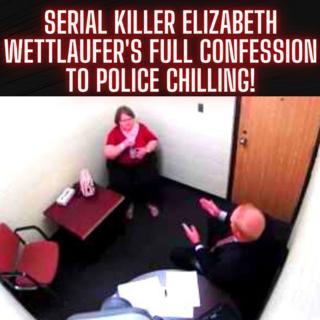
Serial Killer Elizabeth Wettlaufer's FULL Confession to Police CHILLING!
Serial Killer Elizabeth Wettlaufer's FULL Confession to Police CHILLING! Ontario Provincial Police conducted a 2½-hour-long interview on Oct. 5, 2016, in which the former nurse described the killing of patients in her care.
19 Des 20242h 34min
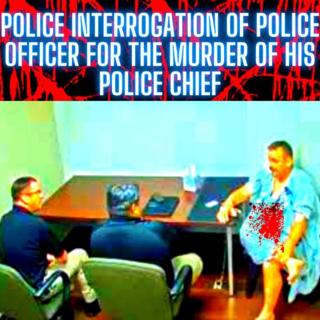
Police Interrogation of Police Officer for the Murder of his Police Chief while on vacation
Police Interrogation of Police Officer for the Murder of his Police Chief while on vacation A former Oklahoma officer has been found guilty of murdering his police chief during a conference in Florida A former Oklahoma police officer was found guilty Wednesday in the death of his police chief while they attended a law enforcement conference in Pensacola, Florida, in 2019. Michael Nealey was found guilty of second-degree murder by a Florida jury, according to CNN affiliate WEAR. Court records show his sentencing is scheduled for April 29. CNN has reached out to Nealey's attorney for comment on the verdict but has not heard back. Nealey was arrested a day after the body of Mannford Police Chief Lucky Miller was found in a hotel room in Pensacola in November, 2019. Escambia County Sheriff's deputies responded to a call about a fight at the hotel where Nealey and Miller were staying for the conference. Prosecutors said during the trial that the medical examiner determined Miller was beaten and strangled or suffocated to death, WEAR reported. Only two people were in that room. One of them is dead and one of them is on trial," said prosecutor Trey Myers during closing arguments, according to the station. Extreme levels of intoxication were involved that night, prosecutors argued, and a forensic toxicologist testified that both men had blood alcohol concentration levels about four times the legal limit to drive, the affiliate reported. "It's impossible to get inside the mind of a man who was here for a law enforcement conference who has had half a gallon of vodka to drink and understand his thoughts," added Myers, WEAR reported. Nealey did not take the stand in his defense, the station reported. The trial began Monday with jury selection and lasted a day and a half before the jury returned a guilty verdict. Miller, 44, was chief of police since 2007. He had a wife and three children.
19 Des 202432min

4 Hours of Reddit's Scariest TRUE Stories In The RAIN! TOTAL Relaxation or Fall Asleep!
4 Hours of Reddit's Scariest TRUE Stories In The RAIN! TOTAL Relaxation or Fall Asleep! true scary stories,scary stories,true horror stories,4 hours of reddits scariest true stories in the rain,3 hours of reddit horror stories,reddit scary stories 3 hours,Scary True Stories Told In The Rain,scary stories told in the rain,creepy stories told in the rain,rain sounds for sleeping,rain sounds for sleeping black screen,rain sounds for sleeping youtube,rain sounds for sleeping 10 hours,rain sounds,sleep sounds,rain,no ads sleep music,no ads music 4 Hours of Reddits Scariest TRUE Stories In The RAIN Relax or Fall Asleep to
11 Jul 20243h 6min





















